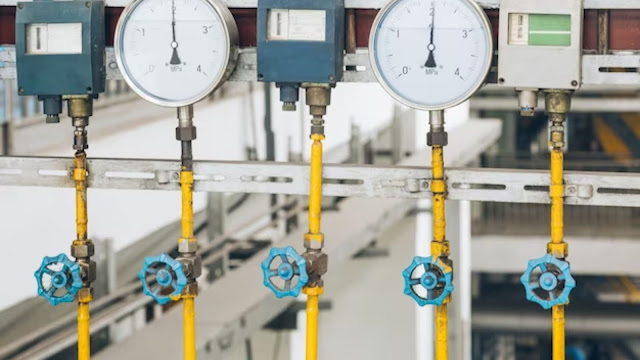In the dynamic landscape of industrial processes, the role of Buy Flow sensors online cannot be overstated. These invalauable devices form the backbone of fluid measurement and regulation, impacting a wide array of industries.
Throughout this blog post, let’s delve into the fundamental functions and significance of flow sensors in industrial settings, equipping you with essential knowledge to make informed decisions in selecting and integrating these devices.
Flow Sensors Unveiled
Flow sensors, at their core, are devices designed to measure the flow rate of fluids in industrial processes. They serve as the eyes and ears of fluid movement, providing crucial data for monitoring and controlling the flow within various systems. Whether it's the flow of water, gas, or other liquids, these sensors play a pivotal role in ensuring optimal operational efficiency.
In measuring fluid flow, flow sensors utilise a range of technologies to capture and analyse data accurately. From mechanical to modern electronic sensors, each type is tailored to the specific requirements of different industrial applications, allowing for precise and reliable flow measurement.
Importance of Flow Sensors in Industrial Processes
The significance of accurate flow measurement cannot be emphasised enough in industrial processes. It forms the foundation for efficient operation, quality control, and safety across diverse sectors.
In industries such as chemical manufacturing, oil and gas, and water treatment, the ability to precisely monitor and regulate fluid flow is integral to the overall production and safety standards.
Consider a chemical manufacturing plant relying on the precise flow of raw materials for its production processes. Any discrepancies in flow measurement could lead to costly errors, compromised product quality, or even safety hazards. This underscores the critical role of flow sensors in maintaining operational integrity and product quality.
Primary Functions of Flow Sensors
Flow sensors operate on the principle of monitoring and regulating fluid flow within industrial systems. By capturing real-time data on flow rates, pressure differentials, and temperature variations, these devices enable operators to make informed adjustments to ensure optimal performance.
Additionally, flow sensors facilitate the detection of anomalies such as leaks or blockages, contributing to the overall maintenance and safety of industrial processes.
The data collected by flow sensors serves a multitude of applications, from simple flow rate monitoring to complex process control. In industrial settings, this data is instrumental in regulating the flow of liquids and gases, as well as facilitating precise dosing and mixing operations.
The ability to gather and analyse this data empowers industries to optimise their processes, reduce waste, and enhance overall productivity.
Common Technologies Used in Flow Sensors
The realm of flow sensor technologies encompasses a diverse array of approaches, each tailored to specific industrial requirements.
From traditional mechanical designs to advanced electronic systems, the choice of technology significantly influences the accuracy and reliability of flow measurement.
Ultrasonic flow sensors, for instance, utilise sound waves to determine fluid flow rates, offering non-intrusive and highly accurate measurements. On the other hand, electromagnetic flow sensors leverage the principles of electromagnetism to capture flow data, making them particularly adept at measuring conductive fluids.
While each technology boasts distinct advantages, it also comes with inherent limitations that must be carefully considered in industrial applications.
Factors to Consider When Selecting Flow Sensors
Choosing the right flow sensor for an industrial process demands a comprehensive understanding of various factors. Compatibility with the fluid being measured, accuracy requirements, and environmental conditions are just a few of the critical considerations that influence sensor selection.
Additionally, the reliability and long-term performance of the sensor under operational conditions are paramount in ensuring seamless integration into existing systems.
The pursuit of optimal flow sensor selection involves a balance of technical specifications and practical considerations. By aligning the capabilities of the sensor with the specific demands of the industrial process, businesses can effectively leverage flow sensors to enhance their operational efficiency and reliability.
Integration and Maintenance of Flow Sensors
Integrating flow sensors into industrial systems necessitates meticulous planning and execution. From sensor placement to calibration procedures, the seamless integration of these devices is essential for accurate and consistent flow measurement.
Furthermore, routine maintenance and calibration routines are imperative to uphold the performance and longevity of flow sensors, safeguarding their reliability in industrial operations.
Best practices in sensor maintenance encompass regular calibration, inspection for wear or damage, and adherence to manufacturer guidelines for optimal performance. By instituting robust maintenance protocols, businesses can uphold the accuracy and reliability of flow sensors, minimising the risk of operational disruptions due to sensor malfunctions.
Final Words
As industries continue to evolve, the advancements in flow sensor technology present new opportunities for enhanced performance and efficiency. By staying abreast of these developments, businesses can harness the power of flow sensors to elevate their operational standards and drive continued success in their respective sectors. Embracing the critical role of flow sensors in industrial processes is a testament to the commitment to precision, reliability, and safety in fluid measurement and regulation.

























